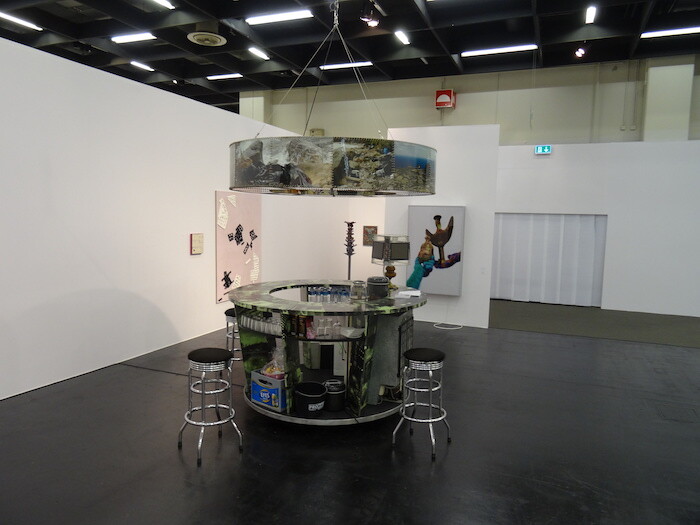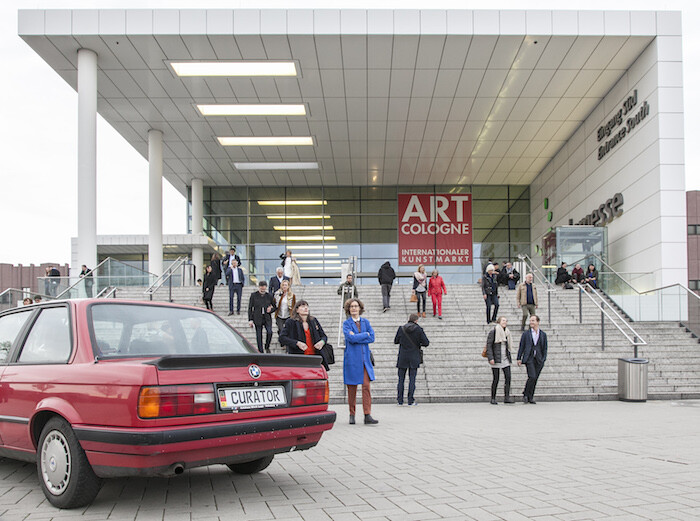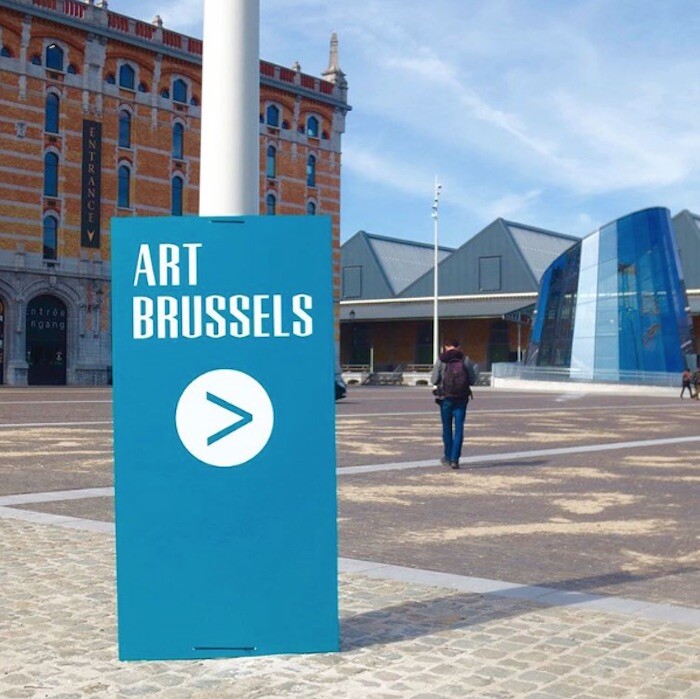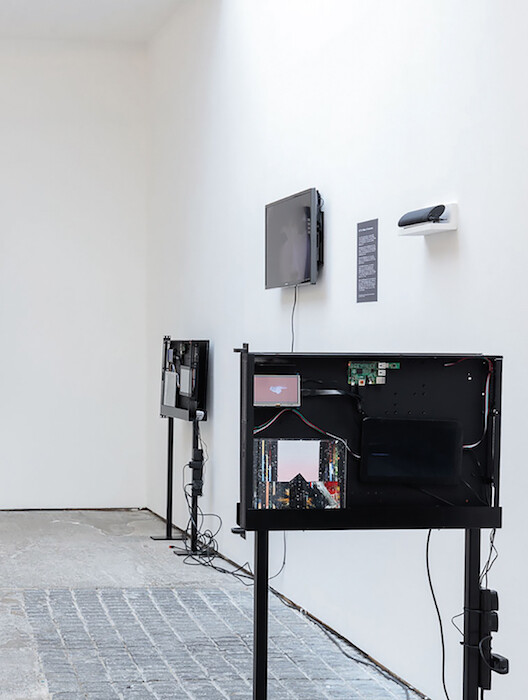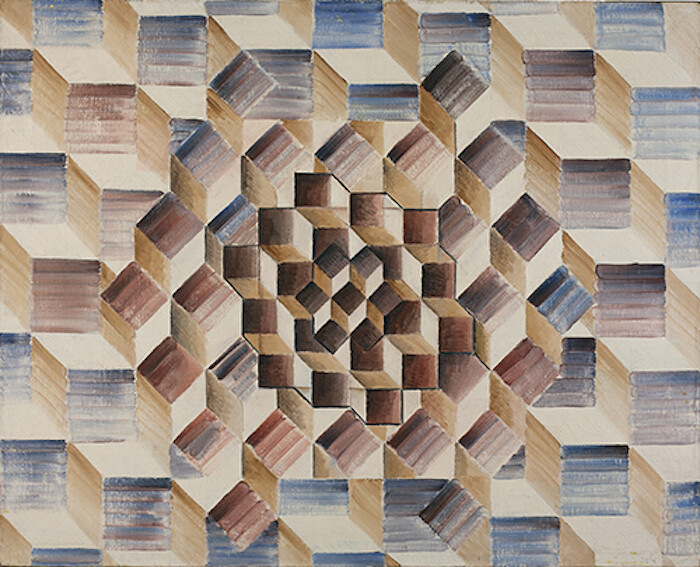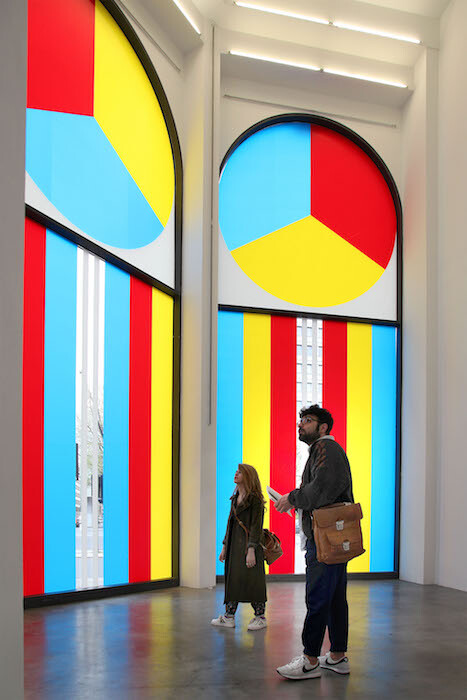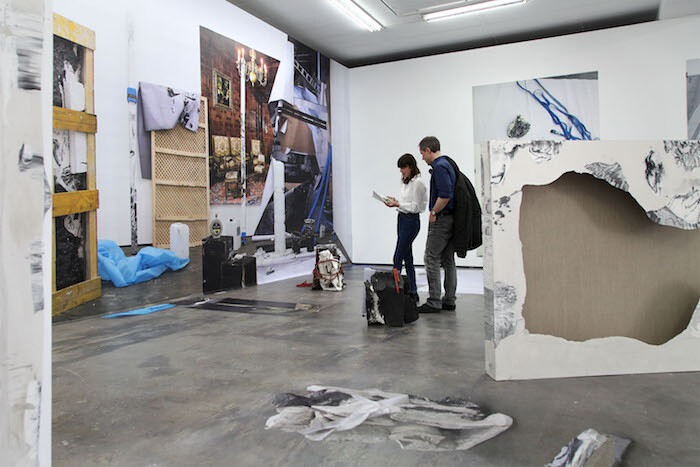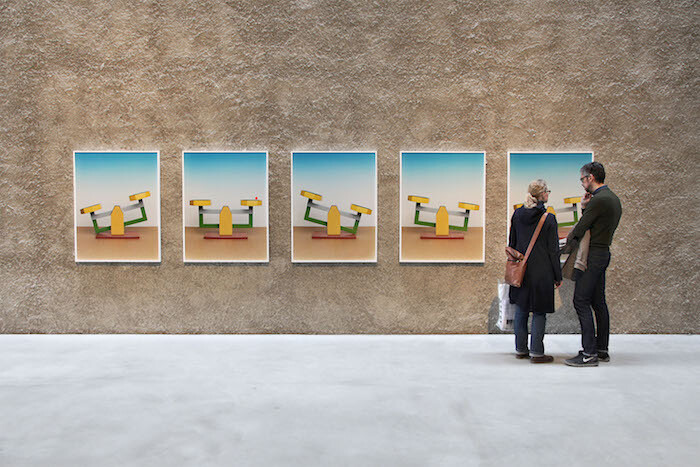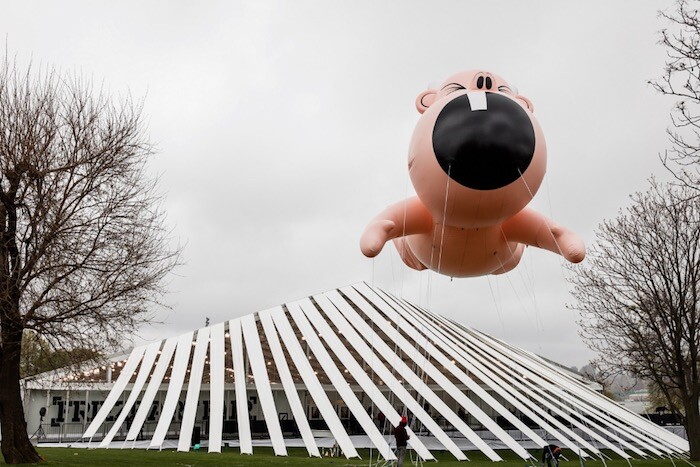When Claus Föttinger installed his Bar 60/99-16 (2016) in the booth of Düsseldorf’s Van Horn Gallery at Art Cologne, Rhinelanders did what they are said to do best and partied, using the installation as an actual bar. Yet what might have been expected to be the biggest celebration—the opening of the 50th Art Cologne, the oldest continuously running contemporary art fair—was a rather sober event. Everything was in place: after a long and painful downturn, some important international galleries have returned to the fair since Daniel Hug became director in 2008. Almost all of the predominant German protagonists have become regulars again since the death of Art Forum Berlin in 2010, and collectors from neighboring countries visit the fair, even some Britons and Americans. All this adds to the unrivaled (in Europe) density of private collectors and institutions in the Rhine region. Sales have always been solid—rarely spectacular—at Art Cologne, where the collectors are traditionally educated and savvy but not deep-pocketed.
But for a 50th jubilee one would have expected more. The low-key atmosphere was only partly due the general sentiment of a world in crisis, and there are structural reasons why the fair felt uninspiring. One of its strengths has always been that it covers the wide range from modernism to the avant-garde, but the best secondary market works now tend to go directly to auction houses in London or New York, as with the Zero group, which has become too expensive for the German market. Nor does the debate around the projected reform of the law on cultural heritage,1 which has already led many collectors to take their artworks out of the country for storage or sale, help German dealers. The primary market, on the other hand, has recently been skewed by the primacy of investment as an incentive to purchase art, with speculators hyping—for example—a regressive style of painterly abstraction. So it was no wonder that many galleries in Cologne showed either safe, established positions or the fashionable post-internet artists, whose production looks quite interchangeable.
A mere two hours drive from Cologne, Art Brussels tried to avoid these pitfalls by reinventing itself. Focused (almost) exclusively on contemporary art, it took the opportunity of the move from the Expo Convention Center to Tours & Taxis, a turn-of-the-century customs house, to reduce the number of participants from 191 to 140. The “Discovery” section—focused on emerging artists—was expanded, while an ageing “Young” section was scrapped altogether, with the more established galleries joining the general section. The addition of the “Rediscovery” section—devoted to art made between 1917 and 1987 by “under-recognized, under-estimated, or forgotten artists”—built a solid art historical foundation and allowed some refreshing insights. (This isn’t a new idea—after Art Cologne fail to succeed with the “Hidden Treasures” program in the mid-2000s, Artissima reinvented “Back to the Future,” the showcase for artists neglected by the market. Even Art Basel adopted a similar format.) In Brussels, all that helped to create a fresh and concentrated impression, with highlights including Cécile B. Evans at Barbara Seiler, Zürich in the “Discovery” section, Bernhard Martin at Thomas Schulte, Berlin in “Prime,” and Liviu Stoicoviciu at Jecza, Timisoara in “Rediscovery.” The general sentiment—considering the pall cast over Brussels by the recent terrorist attacks—was surprisingly positive.
What did not improve the situation for Art Brussels was the arrival of the gallerist-run Independent fair from New York. It is unclear why some of the bigger local galleries participate in a rival event that contributes little to the local market. American collectors are unlikely to travel to a terror-shaken European country three weeks prior to Frieze New York just to see a satellite, however posh it might be. What’s more, if a local market is barely big enough to support one fair, what good can two be? The proliferation of fairs in Brussels in recent years is irritating: in 2015, the ubiquitous collector Alain Servais founded Poppositions together with friends as a low-budget event for young galleries and off-spaces. One of its directors went straight to Independent, about which Servais tweets frequently. In addition, he sits on a prize committee at the main fair.
That divide et impera is not a fruitful long-term strategy was apparent at Berlin’s Gallery Weekend. This four-day-long event still tries to prop up the image of Berlin as one big party where art and life fall into one. Although the audience seemed larger than in the recent past, the widening gap between pretense and reality was all too clear. Started in 2005, this first event of its kind aimed to revitalize the discourse around contemporary art and bring it back into the gallery space. But it was an exclusive event by and for the happy few who didn’t communicate—not to mention co-operate—with the couple of hundred galleries and off spaces in the city. Now that the Berlin-Hype has died down, a chasm has been exposed between the global players who also participate in Art Basel and Frieze, on the one side, and the struggling majority, on the other. Many shows on the program were excellent by the standards of a museum: thoroughly researched, conscientiously presented. And quite boring. One would expect to see greater engagement with the “now” at the showcase event of a city that likes to regard itself as the global center of art production. Instead, the participating galleries chose to play it safe, with names like Diango Hernández (Barbara Thumm), Christopher Williams (Capitain Petzel), Miriam Cahn (Meyer Riegger), and Daniel Buren (Thomas Schulte). If they don’t want to play the Berlin card themselves, then at least the organizers of Gallery Weekend—and abc in the fall—could open up the forum to accommodate their more innovative colleagues.
Something similar is happening at the US edition of Frieze. The offspring of the London enterprise landed in 2012 in New York, or at least nearby. The decision to locate the fair on Randall’s Island was presumably inspired by the desire to avoid the unions’ influence, but it had and has an off-putting effect on collectors. Clients come once for the opening and then stay in Manhattan. This is not a disadvantage for local gallerists—for whom the fair creates a buzz they can exploit in their showrooms—but foreign exhibitors have to sell on the opening day or might not sell at all. The other effect of the makeshift infrastructure, including tent-building and boat transportation, is the enormous cost for participants. This makes it extremely difficult for those with a small booth to break even, unless they are selling six-figure works. The result is an overwhelming majority of unadventurous presentations that guarantee sales. Fairs like Frieze are becoming much like department stores; customers will find what they expect.
The parliamentary bill stipulates that “objects of national cultural importance” above certain age and value thresholds will require an export license prior to being removed to another EU country.

